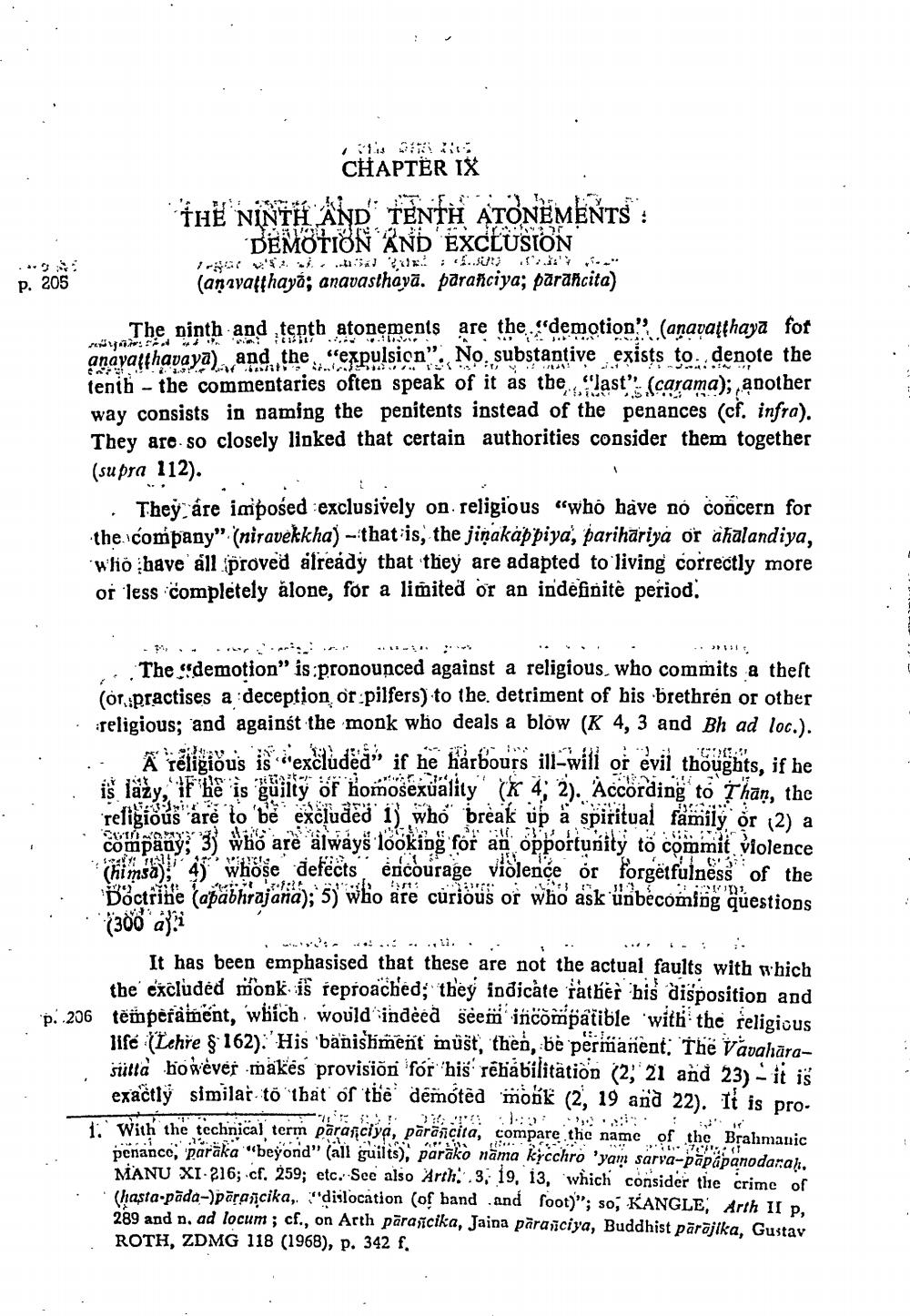________________
CHAPTËR IX
: 29 NINTH AND IN
ENTH ATON 4.11
Tr
DEMOTION AND EXCLUSION
p. 205
(anıyafthaya; anavasthayā. parañciya; parancita)
wy:
The ninth and tenth atonements are the demotion” (anavasthaya for anayafthavaya), and the expulsion”. No, substantive exists to denote the tenih - the commentaries often speak of it as the last; (carama); another way consists in naming the penitents instead of the penances (cf. infra). They are so closely linked that certain authorities consider them together (supra 112).
. They are imposed exclusively on religious "who have no concern for the company" (niraveškha) - that is, the jinakäppiya, parihāriya or aħalandiya, 'wifio have all proved already that they are adapted to living correctly more or less completely álone, for a limited or an indefinite period.
?
The demotion" is pronounced against a religious, who commits a theft (or practises a deception or pilfers) to the detriment of his brethren or other · religious; and against the monk who deals a blow (K 4, 3 and Bh ad loc.). ... A Földicus is o excluded's if he hårbours ill-will of evil thoughts, if he iš läły, if he is guilty of Homosexuality' (K 4; 2). According to shan, the religious are to be excluded 1) who break up á spititual family or i2) a mpany; 3) who are always looking for an opportunity to commit violence
45' whöse' defects, encourage violence or forgetfulness of the Doctrine (apăbhrajana); 5) who are curious of who ask unbecoming questions 7300 azi
It has been emphasised that these are not the actual faults with which
the excluded monk is reproached; they indicate rather bis disposition and p. 206 temperament, which would indeed sèem incompatible with the feligious
life (Lehre 8:162): 'His bañishment müst, ther, bė permanent; The Vavahārasüttà bowever makes provision for his rehabilitation (2; 21 and 23) - it is
exactly similar to that of the demoted monk (2, 19 and 22). It is pro1. With the technical term paraficiya, pārāñcita, compare the name of the Brahmanic
venance, paräka "beyond” (all guilts), parāko nāma kicchro 'yam sarva-pāpäpanodaraḥ,
MANU XI-216; cf. 259; etc. See also Arth..3, 19, 13, which consider the crime of . (hasta pāda-)pārajcika, dislocation (of band and foot)"; so, KANGLE Arth II p.
289 and n. ad locum ; cf., on Arth pärascika, Jaina para ciya, Buddhist pārējika, Gustav ROTH, ZDMG 118 (1968), p. 342 f.




